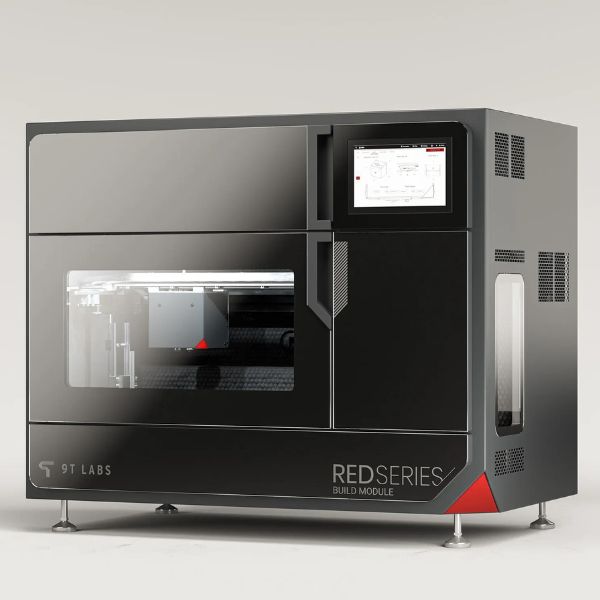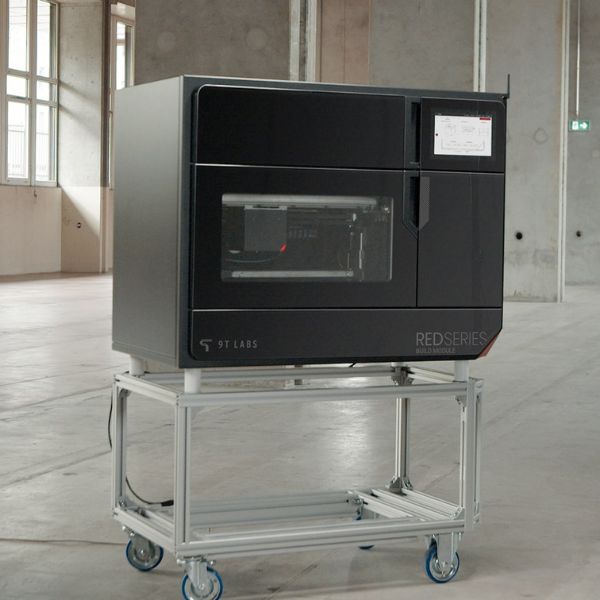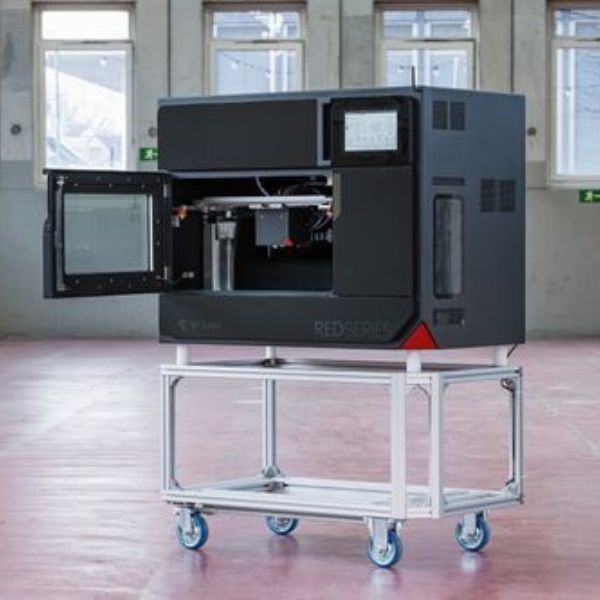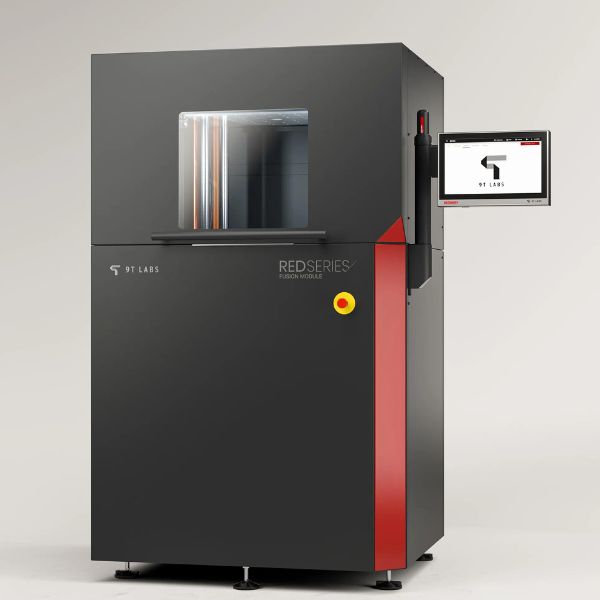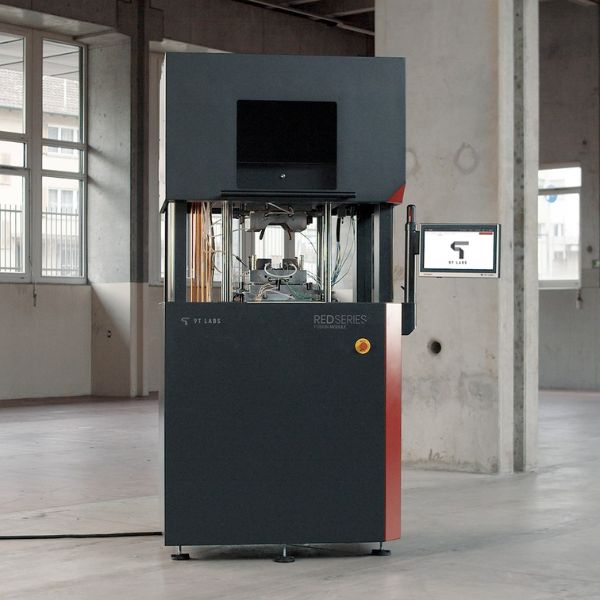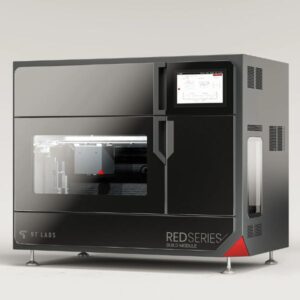The 9tlabs Red Series is a system consisting of a 3D printer and a post-processing solution working together. First the part is manufactured in the Build Module and then the post-processing process is carried out in the Fusion Module. Let’s take a look at the features of both modules.
Build Module
The Build Module from 9tlabs is a professional desktop 3D printer that has a number of qualities that differentiate it from its competition. It is a printer that is easy to use and operate thanks to the brand’s software, among other things. A series of sensors continuously monitor the material deposition process, coupled with easy access to its components that allows for quick and easy setup. We will continue to address the quality of this printer, its motors guarantee unbeatable precision and process control, as well as its integrated filament sensors ensure continuous material deposition. Its temperature-controlled chambers provide high resistance between layers and promise low moisture absorption.
One of the features that distinguishes this printer from many others is its high precision and high-quality carbon fiber deposition technology, very useful for aerospace applications. Just as the 9tlabs solution is capable of printing carbon fiber, it is worth mentioning that it also works with the standard materials on the market. In addition to a weight of 250kg, the machine has a maximum printing volume of 350 x 270 x 250 mm and external dimensions of 1167 mm x 715 mm x 980 mm.
Fusion Module
The Fusion Module allows the production of parts with a superior finish to other post-treatment machines, thanks to its high interlayer adhesion that improves fiber orientation. Like the Build Module, this is a very easy-to-operate machine. It has a large number of sensors that monitor all the information and an integrated board that facilitates access to heating and cooling devices. The quality of the parts post-processed on this machine is so good that it meets aerospace requirements, with a Class A surface finish. Fusion Module technology allows individual subcomponents to be welded and parts to be reshaped. As if that were not enough, the increased design latitude of the fibers through the introduction of Additive Fusion molding allows for the integration of sensors, load insertion points, metal inserts and other multi-material features.
Weighing more than 1000kg, the post-treatment unit has an internal volume of 350 mm x 270 mm x 250 mm and external dimensions of 1730 mm x 1100 mm x 2515 mm.

